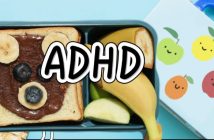There is no one way for a school to remain inclusive to students that exhibit behavioral disorders, but we wanted to talk to Olive International School (OIS), whom we felt is making a noticeable effort in this area. Not only are they doing their utmost to be proactive in helping students overcome these challenges through structured academics focused on the individual student, but they are also implementing many creative strategies with these students in mind. We talked to Gabrielle Westbrook from OIS to learn more.
I’m sure the most common response for many parents learning that their child might be exhibiting some of the symptoms associated with ADHD is “Don’t most children experience these ‘symptoms’ at one point or another during childhood?” When does it stop being a possibility and start becoming a concern?
Westbrook: When a child shows behavioral or academic learning challenges for an extended period of time, then it should be a red flag to parents. Yes, most children have days where they are extremely hyper and curious, but when reprimanded, they usually respond with improved behavior. When a child continues to display abnormal behaviors regularly, then the parents and teachers need to be concerned. Specifically, when a child seemingly cannot control his or her behavior, becomes frustrated when reprimanded, and has a hard time focusing during direct instruction or completing assignments during independent practice, that child needs to be evaluated.
Children, especially young children, do not have stigmas about learning challenges and support services. Those stigmas are embedded in them by society and mass media. If we can get children diagnosed before society inundates them with shameful stigmas associated with learning disorders like ADHD, they can dispel the lies about behavioral and learning challenges with their own truths. There is no harm in seeking help, but not seeking help could cause irreparable damage to children in need of support services.
ADHD is a relatively well-known behavioral disorder and is subsequently stigmatized sometimes as being a “fake” condition with the mainstream media. How do you normally respond to parents that may take a similar stance?
Coming to terms with the fact that a child has a mental, behavioral, emotional, or learning disorder can be quite difficult for parents, especially in China. But, parents have to realize that failure to seek services and get proper diagnoses only prevents their children from overcoming these challenges. If a parent chooses not to take the recommendations from the school and other service providers, they are ultimately choosing to disservice their children. When children have physical disabilities, most parents readily seek aid. Learning disabilities are no different; they also deserve aid from support services and the school.
How can parents be more proactive in helping to develop and encourage positive behavior at home for students with ADHD?
It has been said that the home is the first school. Home is the first place that students learn social norms and expected behaviors. When parents create systems and routines at home, it makes it easier for students with ADHD to adapt to the systems and routines in place at school. When students are allowed to have free rein at home, school seems restrictive and unenjoyable.
In order for students with ADHD to be successful in learning environments, they must have systems in place at home that reinforce the guidelines that they must follow at school. Using timers to increase attention spans and having incentive-based task completion and behavior management trackers help students to build the stamina and self-control needed for inclusive learning environments.
How does Olive International School’s behavior management program accommodate students with ADHD to ensure that they can thrive in mainstream classrooms? How are your classrooms equipped to better suit the needs of these students?
First, every student at Olive International School who has been diagnosed with ADHD or who has displayed significant learning and behavioral challenges receives an Individualized Education Plan (IEP). This IEP document helps teachers, parents, and the student understand the difficulties that the child needs to overcome, the interventions that will help that child reach the goals, and a time of reflection over the child’s progress towards previous goals. Teachers and administrators meet at least once a month to review a student’s IEP.
In addition, parents can opt to have a shadow teacher for students who need additional support and supervision. The shadow teacher’s role is to attend to the learning and behavioral needs of the student being shadowed, and is a vital resource in the classroom because he or she spends the most time with the student one-on-one. Through the viewpoint of the shadow teacher, we learn the student’s triggers, motivations, and preferences.
Last, because ADHD manifests itself so differently in each student, we provide a special behavior support chart that is unique to each child’s various challenges. We have found that the charts avoid embarrassment and do not distract from class instruction. The teacher is made aware of the child’s needs, and the student feels that his or her needs have been addressed.
What ideology has been the most transformative when teaching students with ADHD?
Incentive-based behavior plans have a far greater impact on the overall growth of a child with ADHD than punitive-based systems. While punitive consequences need to be in place, children tend to perform better when they are working towards a goal or reward rather than behaving appropriately to keep from being punished.
Secondly, educational professionals must realize that best practices for students with ADHD are best practices for all students. Students with ADHD need certain coping mechanisms and learning tools to help them stay focused, be productive, and demonstrate self-control. The strategies that teachers utilize for students with ADHD actually make the overall learning environment more engaging for all students. Students with ADHD should never feel different or isolated in a classroom; although the strategies are designed for students coping with ADHD, they should be utilized in the classroom with the understanding that all students will benefit from employing such strategies.
Where do instructors fail students with ADHD?
I think instructors fail students in two significant ways. First, every teacher wants a perfect classroom where students learn without causing any trouble, but students are not robots. Children have different personalities, interests, and as evidenced by the need for this interview, challenges. When teachers fail to understand who their students are and force their students to fit into a cookie-cutter model of how students should behave, we stifle children’s growth and ostracize them in learning environments that should foster their development. Secondly, teachers fail students when they do not build relationships with students. When they see that teachers are paying attention to them, spending time learning their interests and hobbies, and finding ways to engage them inside and outside of class, then they become invested in both the teacher and their overall learning.
What are some simple things schools in China could be doing to help facilitate the development of these students?
Schools in China have to honor the individuality of students. No two students, whether they have ADHD or not, are going to be the same. And thus, how teachers approach each child is critical to their overall growth in school. While there are standards that all children must meet behaviorally and academically, teachers must consider the disabilities and challenges as well as the gifts and talents of their students.
Do you have any last pieces of advice?
I really want society to understand that ADHD presents learning and behavioral challenges, but it does not dictate the academic achievement or social aptitude of children. With the proper diagnoses and support services, students with ADHD can thrive in learning environments and various social settings. Teachers and parents must respectfully collaborate with one another to find appropriate solutions to help their children. Last, the intervention strategies that teachers use to help children cope with ADHD are best strategies for all children. Making classroom accommodations for children with ADHD will actually benefit all students in the learning environment. Many of the accommodations make instruction more engaging, behavior management more feasible, and expected learning outcomes more achievable.

Gabrielle Westbrook is a native of Memphis, Tennessee in the US. She came to China in 2014, and she currently works at Olive International School as the Dean of Students where she handles student affairs and behavior management. She is also a Secondary English teacher at the same school and her classes focus on critical thinking skills, in-depth literary analysis, and articulate written expression.

This article appeared on p38-39 of beijingkids March 2018 issue.




